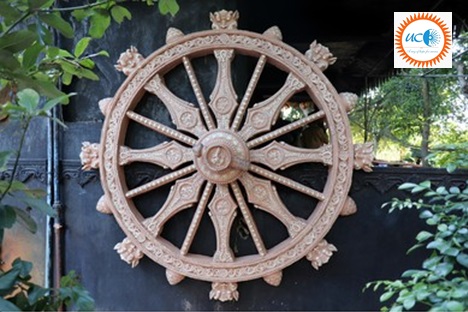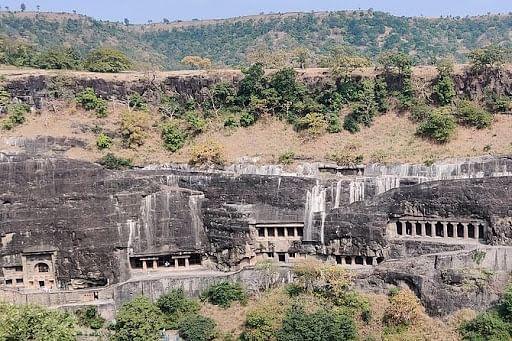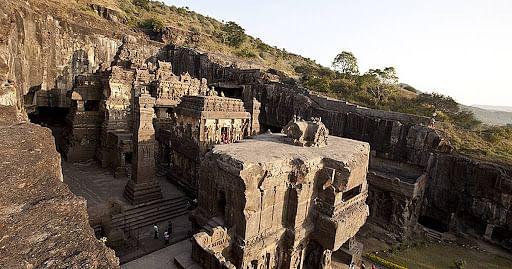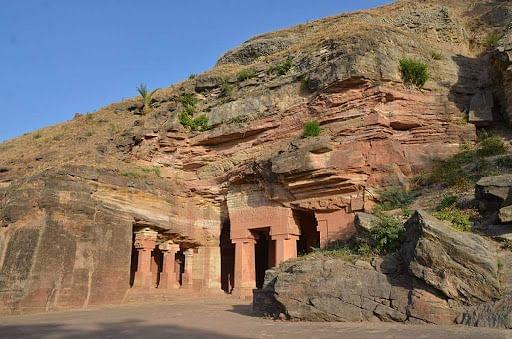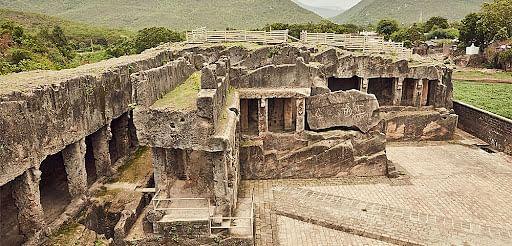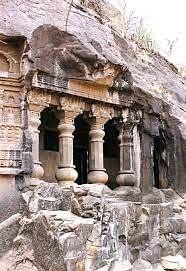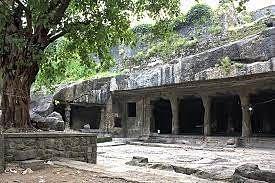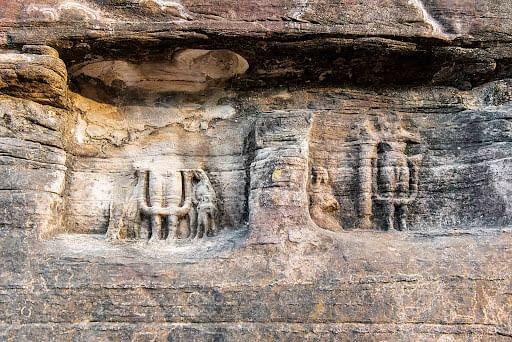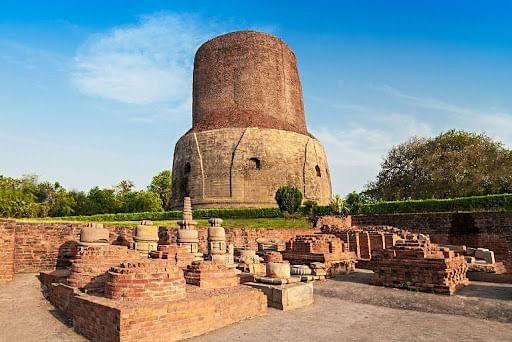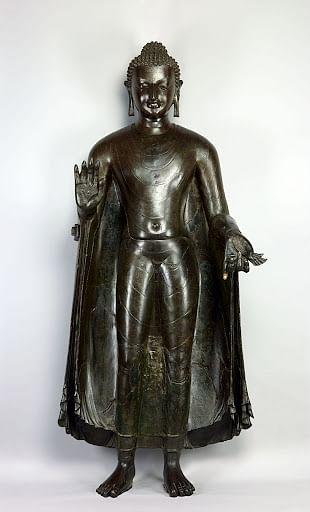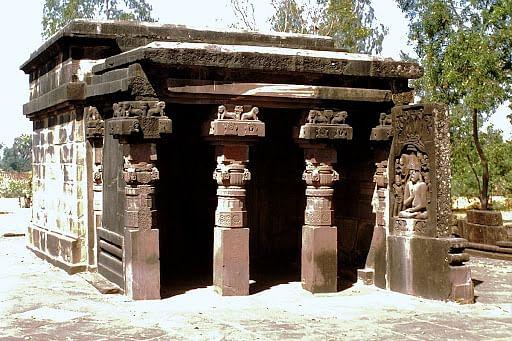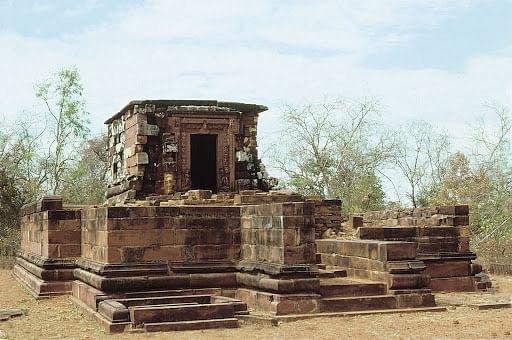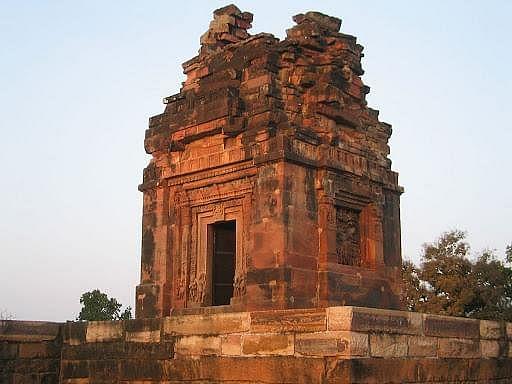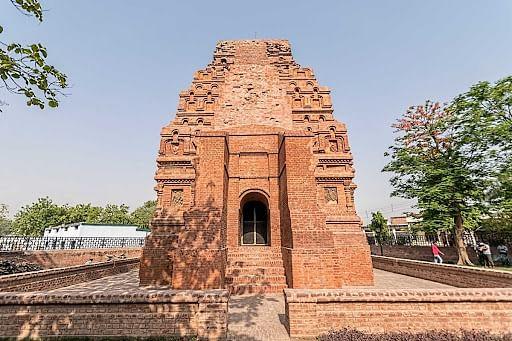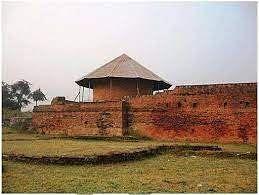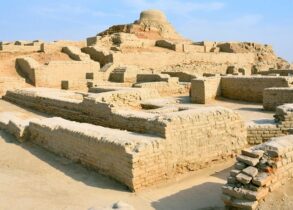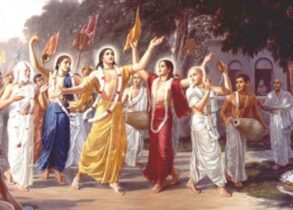Write about development of Art and Architecture during Gupta period.
Gupta architecture is a representation of the people’s strong religious convictions during the time. The “Golden Period of Indian Architecture” is typically referred to as the beginning of the Gupta Empire in the 4th century A.D. While the older Gupta monarchs were Buddhists who preserved Buddhist architectural traditions, temple building rose to prominence under the patronage of the later Gupta rulers who were Hindus. Similarly, during the Gupta period, Buddhist and Jain art achieved their pinnacle.
Gupta Architecture
- The beginning of the Gupta Empire in the 4th century A.D. is considered the “Golden Period of Indian Architecture.”
- Temple construction gained prominence under the sponsorship of the later Gupta rulers, who were Hindus.
- While the early Gupta kings were Buddhists who conserved Buddhist architectural traditions, temple building rose to prominence under the patronage of the later Gupta rulers, who were Hindus.
- The Gupta kings were Brahmanical rulers, especially in the later phases. They, on the other hand, displayed exceptional tolerance for all other religions.
- Vishnu was worshipped in the northern and central parts of India, Shiva in the southern section, and Shakti in the eastern part of India, as well as on the Malabar coast or in the south-west.
Cave Architecture
- The architectural development of caves remained consistent during the Gupta period.
- The utilisation of mural paintings on the cave walls, on the other hand, became an extra element.
- The caves of Ajanta and Ellora have some of the best examples of mural art.
- Ajanta is a group of rock-cut caves near Aurangabad, Maharashtra, amid the Sahyadri ranges on the Waghora River.
- There are 29 caves in all, 25 of which were utilised as Viharas (residence caves) and 4 of which were used as Chaitya (prayer halls).
- Between 200 B.C. and 650 A.D the caves were constructed.
- The Buddhist monks inscribed the Ajanta caves under the patronage of the Vakataka rulers, one of them was Harishena.
- The figures in these caves were painted with frescoes and exhibited a high level of naturalism. The colours were created from local plants and minerals.
- The paintings’ outlines were painted in red, and then the insides were painted.
- The absence of blue in the paintings is one of the most remarkable elements.
Ajanta caves
- Another famous cave architecture site is Ellora Caves.
- It is almost 100 kilometres from the Ajanta caves in Maharashtra’s Sahyadri hills. It consists of 34 caves, 17 of which are Brahmanical, 12 Buddhist, and 5 Jain.
- These caves were built by numerous guilds from Vidarbha, Karnataka, and Tamil Nadu between the 5th and 11th centuries A.D. (they are newer than the Ajanta Caves).
- As a result, in terms of topic and architectural styles, the caves represent a natural diversity.
Ellora caves
- A set of nine Buddhist caves formed around the 6th century A.D. on the bank of the Bagh river in Madhya Pradesh.
- It has a similar architectural style to the Ajanta caves.
Bagh caves
- These are Buddhist caves located in Gujarat’s Junagadh region. Although there are no caves here, three separate places can be located.
- Khapra Kodiya, Baba Pyare, and Uparkot are the three sites found.
- The presence of a 30-50 ft high fortress known as “Upar Kot” in front of the prayer hall is a distinctive feature of the Junagadh caves.
Junagadh caves
- “Pandav Leni” refers to a series of 24 Buddhist caves in Nasik. They were created in the first century A.D. during the Hinayana period.
- Later, though, the Mahayana sect’s impact may be seen in these caves.
- His presence is expressed in the Hinayana sect through the usage of motifs and symbols such as the throne and footprints.
- Later on, Buddha idols were sculpted inside these caves, indicating Mahayana Buddhism’s impact.
- The site also shows a superb water management system, as evidenced by the presence of water tanks carved out of solid rock.
Nasik Caves
- It is also known as Montperir Caves, located in Borivali, near Mumbai, and was built as a Brahmanical cave during the late Gupta dynasty.
- It was later transformed into a Christian cave, however.
- Sculptures of Natraja, Sada Shiva, and Ardhanarishwara can be seen among the site’s ruins.
- Above the cave, precincts are the church and its graveyard.
Mandapeshwar Caves
- Caves of Udayagiri (not to be confused with Odisha’s Udayagiri-Khandagiri Caves). It’s in Madhya Pradesh’s Vidisha district.
- It was built under the patronage of Chandragupta II in the early fifth century AD and is known for its numerous sculptures on the hill walls.
- Varaha, or Vishnu’s Boar incarnation, is a renowned sculpture.
- One of the earliest Hindu sculptures may be found in the caverns.
Udaygiri Caves
Stupas
- The development of stupas slowed during the Gupta period.
- However, the Dhamek stupa in Sarnath, near Varanasi, is an excellent example of a stupa built during this time.
Dhamek Stupa
- The Dhamek Stupa is a huge stupa in Sarnath.
- After reaching enlightenment, the Buddha is claimed to have given his first sermon to his first five students, led by Kaundinya, revealing his Eightfold Path leading to nirvana at the Dhamek Stupa.
Dhamek Stupa
Sculptures
- Sarnath School of Sculpture, which sprang up near Sarnath, was added to the list.
- Many Buddha pictures in Sarnath have plain translucent drapery covering both shoulders and a sparsely ornamented halo around the head, whereas the Mathura Buddha images retain the folds of the drapery and the halo around the head is lavishly embellished.
- Sultanganj Buddha is a notable example (7.5ft in height).
Sultanganj Buddha
Temple Architecture
- The beginning of Indian temple architecture may be traced back to the Gupta dynasty.
- There were manuals created on how to build temples.
- The Gupta temples were divided into five categories:
- Kankali Devi temple in Tigawa and the Vishnu Varaha temples in Eran are examples of square buildings with flat roofs and shallow pillared porches.
- For the first time, the sanctum or cella (garbhagriha) of a temple with a single entrance and a porch (Mandapa) appears.
Kankali Devi Temple
- An extension of the previous form with the addition of an ambulatory (pradakshina) surrounding the shrine, often a second level;
- Examples include the Shiva temple in Bhumara, and the ladkhan at Aihole.
- Parvati temple in Nachna Kuthara is another notable example.
Shiva Temple
- The Dashavatara temple (Deogarh Jhansi) and the brick temple at Bhitargaon Kanpur are famous examples of the square temple with a low and squat tower (shikhara) above; pillared approach, a high platform at the base.
- The “Curvilinear tower,” or “Shikhara,” was the most remarkable achievement of this stage.
- Temple construction in the “Nagara Style” is regarded to be the third stage’s triumph.
Dashavatara Temple
- The Kapoteswara temple in Cezarla (Krishna district) is a rectangular temple with an apsidal back and barrel-vaulted roof above.
Kapoteswara Temple
- Circular temples with shallow rectangular projections on the four cardinal faces; the Maniyar Math shrine in Rajgir, Bihar, is the sole monument that exemplifies the form.
Maniyar Math Shrine In Rajgir
Conclusion
Between 320 to 550 CE, the Gupta Empire ruled over northern, central, and southern India. The achievements in the arts, architecture, sciences, religion, and philosophy are well-known during this time period. Chandragupta I (320–335 CE) began the Gupta Empire’s rapid development and quickly established himself as the empire’s first autonomous ruler. It signalled the end of 500 centuries of regional power dominance and the resulting unrest, which began with the Mauryas’ fall. It marked the start of a period of overall wealth and expansion that lasted for the following two and a half centuries and was known as India’s Golden Age.

